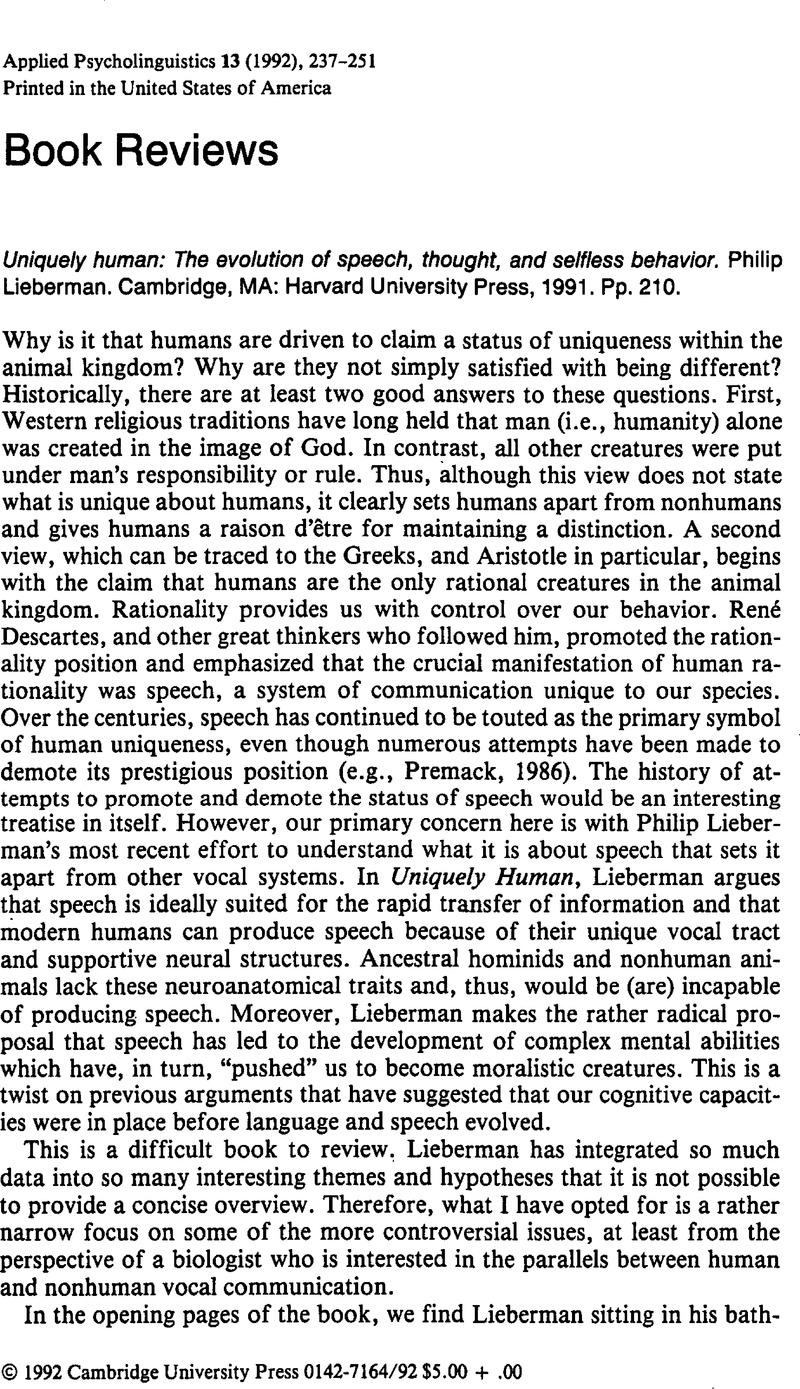Crossref Citations
This article has been cited by the following publications. This list is generated based on data provided by Crossref.
Locke, John L.
1994.
Language and communication: Comparative perspectives. Herbert L. Roitblat, Louis M. Herman, and Paul E. Nachtigall (Eds.). Hilisdale, NJ: Erlbaum, 1993. Pp. 507..
Applied Psycholinguistics,
Vol. 15,
Issue. 2,
p.
270.


